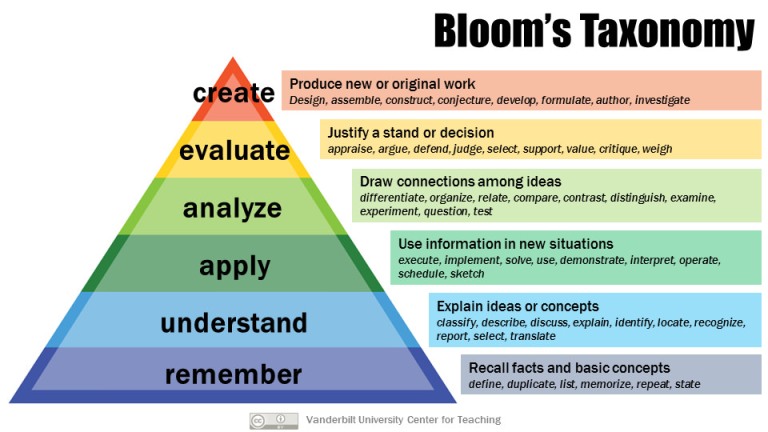‘Unpacking’ knowledge questions is one of the core skills that ToK students need to become adept at if they are to achieve well in the course. I have always found it challenging to teach students how to unpack the KQs without actually unpacking them myself. I have tried lots of different methods, I think applying Bloom’s taxonomy to Knowledge Claims arising from the KQ is probably the most effective method that I’ve found.
If you’re unfamiliar with Bloom’s Taxonomy – it’s a hierarchical framework of cognitive skills developed by Benjamin Bloom in USA in 1950’s. It’s a scaffolding process for developing thinking skills (yes, they did scaffold learning 70 years ago ! ). It can also be used as a framework for guiding the unpacking of KQs.

ToK Teachers can use this framework to unpack any KQs: The Essay Titles, Presentation KQs or those arising from everyday teaching.
Students will need to be able to identify Knowledge Claims arising from the KQ in order to apply Bloom’s Taxonomy.
I have included worked examples below. I have developed the claims from the Prescribed Titles for November 2019. I have written questions at each level of Bloom’s taxonomy, if students were to discuss these questions they would be unpacking the KC (it would give them a better understanding of the KQ).
I have included separate PDFs for each of the Nov 19 PT’s (just in case colleagues want to direct a group to a specific PT), I have also included the aggregate document.
I have also included a diagram of Bloom stem words for forming questions to access Bloom’s levels.
Enjoy !
Daniel.
Q1 Nov19 Responsibility for Accuracy
Q2 Nov 19 Unique humans
Q3 Nov 19 SK changes, confident_
Q4 Nov 19 Observation effective _
Q5 Nov 19 Scepticism
Q6 Nov19 Significant truth
